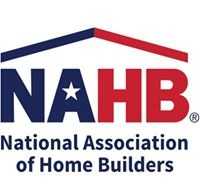WASHINGTON, D.C. – (RealEstateRama) — Shortages of buildable lots and skilled labor, along with excessive regulations, rising mortgage interest rates and ongoing home price appreciation pushed housing affordability in the fourth quarter of 2016 to its lowest point since the third quarter of 2008, according to the National Association of Home Builders (NAHB)/Wells Fargo Housing Opportunity Index (HOI) released today.
“Though builders remain confident that housing markets across the nation will continue to show gradual improvement in the year ahead, they remain concerned that regulatory constraints and lot and labor supply issues are preventing a more robust recovery,” said NAHB Chairman Granger MacDonald, a home builder and developer from Kerrville, Texas. “The rising costs of construction as it relates to land and labor are putting upward pressure on home prices.”
“Affordability remains positive nationwide even as demand is outstripping supply in many markets,” said NAHB Chief Economist Robert Dietz. “Though mortgage rates are rising, incomes should rise faster as well, helping to keep home prices affordable. Meanwhile, policymakers at all levels of government must address regulatory burdens that are raising housing costs while officials at the state and local level need to take steps to put more lots in the pipeline to help offset future price growth.”
In all, 59.9 percent of new and existing homes sold between the beginning of October and end of December were affordable to families earning the U.S. median income of $65,700. This is down from the 61.4 percent of homes sold that were affordable to median-income earners in the third quarter.
The national median home price increased from $247,000 in the third quarter to $250,000 in the fourth quarter. Meanwhile, average mortgage rates edged higher from 3.76 percent to 3.84 percent in the same period.
Youngstown-Warren-Boardman, Ohio-Pa., was rated the nation’s most affordable major housing market, where 90.4 percent of all new and existing homes sold in the fourth quarter were affordable to families earning the area’s median income of $53,900. Meanwhile, Fairbanks, Alaska, was once again rated the nation’s most affordable smaller market, with 95.1 percent of homes sold in the fourth quarter being affordable to families earning the median income of $93,800.
Rounding out the top five affordable major housing markets in respective order were Buffalo-Cheektowaga-Niagara Falls, N.Y.; Harrisburg-Carlisle, Pa.; Cincinnati, Ohio-Ky.-Ind. (tied with Harrisburg); and Syracuse, N.Y.
Smaller markets joining Fairbanks at the top of the list included Elizabethtown-Fort Knox, Ky.; Binghamton, N.Y.; Canton-Massillon, Ohio; and Springfield, Ill.
For the 17th consecutive quarter, San Francisco-Redwood City-South San Francisco, Calif., was the nation’s least affordable major housing market. There, just 7.8 percent of homes sold in the fourth quarter were affordable to families earning the area’s median income of $104,700.
Other major metros at the bottom of the affordability chart were located in California. In descending order, they included Los Angeles-Long Beach-Glendale; Anaheim-Santa Ana-Irvine; San Diego-Carlsbad; and San Jose-Sunnyvale-Santa Clara.
Four of the five least affordable small housing markets were also in California. At the very bottom of the affordability chart was Salinas, where 15.2 percent of all new and existing homes sold were affordable to families earning the area’s median income of $63,500.
In descending order, other small markets at the lowest end of the affordability scale included Napa; Santa Cruz-Watsonville; San Luis Obispo-Paso Robles-Arroyo Grande; and Kahului-Wailuku-Lahaina, Hawaii.
Please visit www.nahb.org/hoi for tables, historic data and details.
Editor’s Note: The NAHB/Wells Fargo Housing Opportunity Index (HOI) is a measure of the percentage of homes sold in a given area that are affordable to families earning the area’s median income during a specific quarter. Prices of new and existing homes sold are collected from actual court records by Core Logic, a data and analytics company. Mortgage financing conditions incorporate interest rates on fixed- and adjustable-rate loans reported by the Federal Housing Finance Agency.
The NAHB/Wells Fargo HOI is strictly the product of NAHB Economics, and is not seen or influenced by any outside party prior to being released to the public.
CONTACTS
Elizabeth Thompson
202-266-8495







